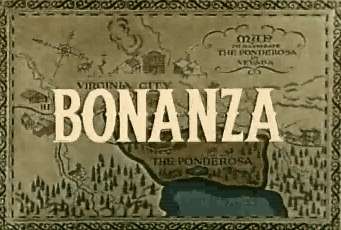Exploring the Legacy and Impact of Bonanza

Identify key moments in television history by analyzing Bonanza’s contributions. This show not only captivated audiences during its original run from 1959 to 1973 but also laid foundational principles for future productions. Consider how its storytelling techniques, character development, and themes of family loyalty resonate with contemporary narratives.
Data indicates that Bonanza was one of the first television programs to feature a wealthy family, which shifted audience expectations about familial dynamics onscreen. Evaluate how these elements set the stage for future shows centered around complex family relationships. Highlight notable innovations in cinematography and narrative structure that are still emulated in today’s series.
Reflect on Bonanza's cultural reach, influencing merchandise, spin-offs, and adaptations. Investigate its long-standing reruns and fanbase that demonstrate its lasting appeal across generations. Research how this show has shaped perceptions of western television, creating a lasting imprint in both entertainment and popular culture.
The Cultural Significance of Bonanza in American Television
Consider integrating the profound societal themes depicted in this iconic Western series into modern discussions about family dynamics, conflict resolution, and morality. With its focus on the Cartwright family, the narrative addresses complex relationships and the significance of loyalty, challenging traditional norms of masculinity while promoting justice and kindness.
Analyze the diverse representation of characters, including African American, Native American, and female figures, which was innovative for its time. This inclusion broadened the narrative scope, influencing future shows to incorporate multifaceted characters and promote inclusivity.
Highlight the series' role in shaping audience perceptions of the American West. Its portrayal of rugged individualism alongside communal responsibility helped define pop culture views on cowboy ideals, heritage, and frontier life, making it a reference point for countless cowboy-themed programs that followed.
Investigate how the themes of perseverance and resilience resonate within contemporary narratives. These qualities exhibited by the Cartwrights provide foundational lessons that audience members can apply to their own lives, encouraging viewers to confront challenges with determination.
Examine viewership statistics, noting that the show consistently ranked high during its airing from 1959 to 1973, indicating a significant cultural footprint. Its long-lasting popularity led to successful merchandise lines, spin-offs, and adaptations that continue to influence today's entertainment landscape.
Incorporate discussions surrounding the iconic musical score and its impact on audience engagement. The familiar theme song not only became emblematic of the series but also set a benchmark for how music could enhance storytelling in televised dramas.
By assessing these factors, it becomes evident that this classic program significantly shaped American television, leaving an enduring mark on narratives and character development that continue to inspire creators and audiences alike.
How Bonanza Revolutionized Storytelling in Westerns
Shifting focus from mere shootouts and gunfights, this series emphasized character development and emotional depth. The Cartwright family, with their distinct personalities and backgrounds, created a rich narrative environment.
- Character Complexity: Each character displayed flaws, ambitions, and moral dilemmas, allowing viewers to connect on multiple levels.
- Family Dynamics: Central themes revolved around familial bonds and moral choices, drawing audiences into relatable scenarios.
- Social Issues: Episodes tackled contemporary issues such as race, gender roles, and justice, making a connection to the societal climate of the 1960s.
- Multi-Episode Arcs: Storytelling evolved to encompass longer narratives, encouraging audiences to invest emotionally over multiple episodes.
This approach set a precedent for future Westerns, emphasizing substance alongside action. By combining heartfelt storytelling with the rugged backdrop of the American West, this program crafted a narrative style that influenced later series.
Today, many contemporary Westerns build upon this framework, utilizing nuanced character portrayals and complex narratives to engage viewers. Starting with profound, relatable themes, creators continue to shape modern storytelling inspired by this innovative classic.
Influence of Bonanza on Contemporary TV Series and Genres
Influence of this classic Western has permeated multiple avenues of modern television, particularly in plot structure and character development. Series like Yellowstone have adopted similar narratives focusing on familial ties and moral dilemmas in rugged settings, effectively mirroring the Ponderosa dynamic.
Cable dramas have embraced the multi-generational storytelling approach pioneered in earlier episodes, emphasizing complex relationships and ethical conflicts that resonate with viewers. Characters in current shows frequently display a blend of personal flaws and admirable traits, echoing the depth found in characters like Ben Cartwright.
Contemporary procedural dramas benefit from Bonanza’s episodic format, where self-contained stories unfold alongside overarching narratives. Integrating standalone cases with ongoing personal arcs has become a staple, evident in series such as NCIS and Law & Order.
Western genre revivals have seen a renewed focus on character-driven tales, where landscapes serve as more than mere backdrops. For instance, Hell on Wheels reinterprets the grit and moral ambiguity prevalent in Bonanza, appealing to audiences who yearn for authenticity in character interactions.
Further, the series has influenced how modern dramas balance light-hearted moments with darker themes. This tonal variance is now commonplace, seen in series like The Good Place and Stranger Things, where humor often intertwines with significant moral questions.
Merchandising and cross-media adaptations have also flourished, inspired by the commercial success of Bonanza’s branded merchandise. This approach has paved the way for franchises like Game of Thrones, where extensive merchandising accompanies narrative depth.
In essence, the stylistic choices and narrative strategies established in Bonanza resonate throughout various modern series, shaping how stories are crafted and presented to today’s audiences.
Character Development in Bonanza: A Case Study
Examine the character arcs of the Cartwright family to grasp the intricacies of development in this classic series. Each character's growth reflects personal struggles and societal challenges, enhancing viewer engagement.
Focus on Adam Cartwright, the eldest son, whose journey embodies the conflict between tradition and progress. Initially portrayed as a responsible leader, his evolution reveals layers of self-doubt and ambition. Each episode provides insights into his decision-making process, showcasing moral dilemmas that resonate with modern audiences.
In contrast, Hoss Cartwright presents a different narrative. His character offers a blend of warmth and strength, displaying growth through personal achievements and romantic pursuits. Analyzing Hoss’ relationships reveals how his compassion shapes interactions, creating deeper emotional connections with viewers.
Little Joe, the youngest, experiences a transition from youth to maturity. His narrative arc highlights youthful impulsiveness while gradually illustrating the burdens of adulthood. This character's romantic struggles and quest for identity resonate strongly, showcasing a relatable coming-of-age experience.
Examining these dynamics reveals a thoughtful balance between family loyalty and personal aspirations. It would be beneficial to analyze supporting characters such as Ben Cartwright, whose leadership style influences his sons, shaping their values and choices throughout the series.
| Character | Key Traits | Development Overview |
|---|---|---|
| Adam Cartwright | Responsible, Ambitious | Growth through leadership vs. personal ambition |
| Hoss Cartwright | Warm, Strong | Emotional depth through relationships |
| Little Joe | Impulsive, Romantic | Coming-of-age narrative with identity struggle |
| Ben Cartwright | Wise, Authoritative | Influences family values and decisions |
This focused analysis of character development provides crucial insights into narrative construction, offering lessons applicable to storytelling in various media. Each character's complexity enhances thematic richness, making this a worthy case study for writers and creators alike.
Bonanza's Role in Shaping Public Perception of the American West
This popular TV series significantly influenced interpretations of Western culture, introducing viewers to archetypical characters and scenarios that established a romanticized vision of this region. Here are key elements contributing to its effect:
- Character Archetypes: The portrayal of strong male figures, such as Ben Cartwright, created an image of rugged individualism, representing values like family loyalty and moral integrity.
- Setting and Imagery: Scenic depictions of vast landscapes, cattle ranching, and frontier living evoked nostalgia, framing the West as both a place of adventure and opportunity.
- Conflict and Resolution: Episodes showcasing conflicts with Native Americans and outlaws often included moral dilemmas that reflected contemporary societal issues, resonating with audiences’ own experiences.
- Cultural Representation: The show presented a largely Eurocentric view of history, often sidelining indigenous perspectives, which shaped public discussions around representation in media.
- Family Dynamics: Focusing on familial relationships amidst challenges offered a blueprint for social cohesion, impacting how viewers perceived community values in Western culture.
The series not only entertained but also molded attitudes towards the American West, establishing a template for future portrayals in media, literature, and popular culture.
To understand its lasting influence, consider the continued referencing of themes from the series in modern storytelling. Analyses of popular media underscore how such narratives continue to perpetuate specific images of Western identity.
The Lasting Legacy of Bonanza in Popular Culture and Media
Consider watching classic television shows for insights into storytelling techniques. This series set standards in character development, driving complex narratives that emphasized familial bonds and moral lessons. Its characters became archetypes, influencing numerous other productions in the Western genre.
Observe how references and homages to this show appear in modern films, series, cartoons, and even video games. Projects frequently cite this iconic series, showcasing its influence in dialogue or plot elements that mirror its themes of loyalty and justice.
Musical elements also reflect its impact through reimagined themes in various media. The opening theme remains recognizable, often used in comedic contexts or parodies, reinforcing the catchy nature of its score. Soundtracks from this era inspired new composers, who acknowledge the role of such melodies in shaping audience emotions.
Cultivating interest in classic Western motifs, new creators pay homage to this show through reboots or inspired narratives, drawing connections to modern societal issues while maintaining the essence of storytelling seen in earlier works.
Explore merchandise and collectibles tied to this iconic title. Memorabilia such as action figures, art, and apparel continues to attract fans, fostering nostalgia and connecting younger generations to this classic series.

